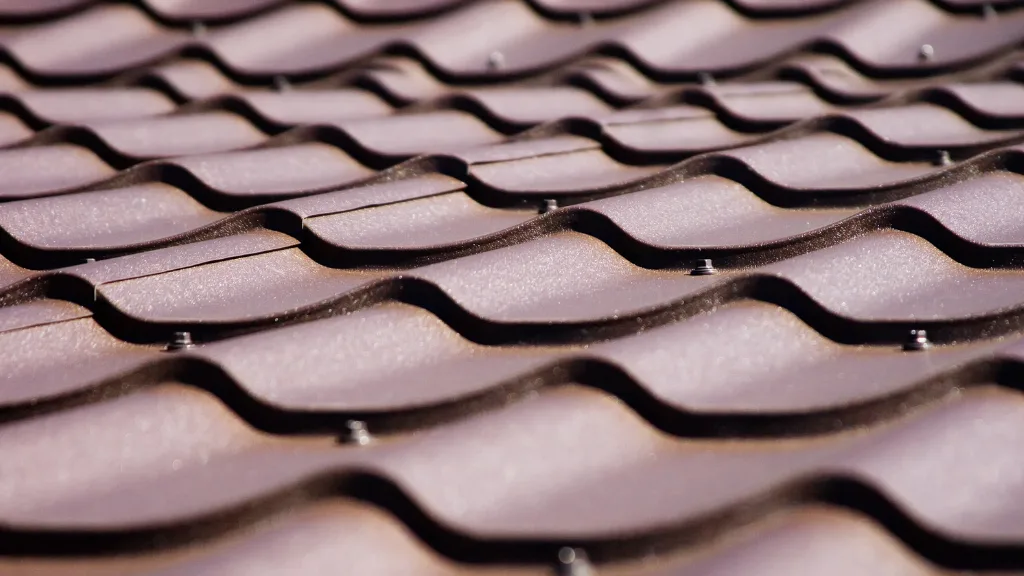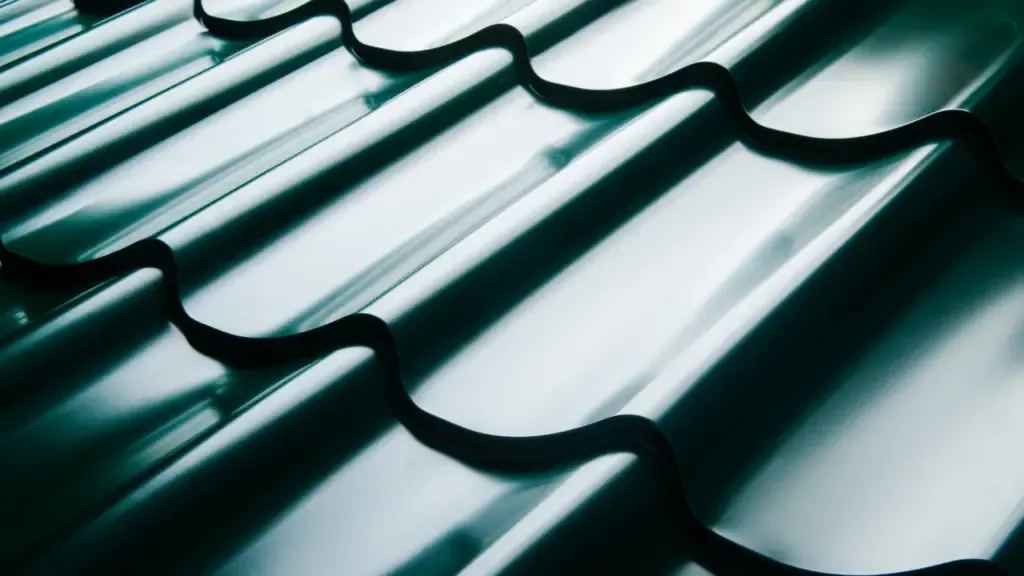
Are you looking to upgrade your roof to a more durable and long-lasting option like metal?
If you’re considering installing a metal roof over shingles, you might be wondering about the best way to do so.
One option is to use furring strips, which can help create a smooth and stable base for your new roof.
In this article, we’ll provide a comprehensive guide to installing a metal roof over shingles with furring strips, including tips on preparation, installation, and potential challenges.
With this information, you’ll be able to tackle this project with confidence and give your home the protection and longevity it deserves.
Why Install Metal Roof Over Shingles
Pros of Metal Roofing
There are several advantages of installing a metal roof over existing shingles:
- Durability: Metal roofs are known for their longevity and can last up to 50 years or more with proper maintenance. In comparison, asphalt shingles usually need to be replaced every 15-20 years.
- Weather Resistance: Metal roofing is highly resistant to wind, hail, water damage, and extreme weather conditions. They can withstand winds up to 120 mph and provide excellent protection against heavy snowfall.
- Energy Efficiency: Metal roofs can help reduce energy costs by reflecting heat and maintaining a consistent temperature inside your home.
- Low Maintenance: Unlike asphalt shingles, metal roofs require minimal maintenance, which reduces the overall cost and effort required over time.
- Slope Compatibility: Metal roofing can be installed on any roof slope, making it suitable for various types of buildings and properties.
Cons of Metal Roofing
Despite numerous benefits, there are some drawbacks to consider when installing metal roofing:
- Cost: The initial cost for a metal roof installation can be higher than that of a shingle roof. Material costs per 100 sq. ft. for a steel roof range from $200 to $350.
- Installation Complexity: Metal roof installations can be slightly more complicated than shingle roofs, and it is generally not recommended for DIY projects.
- Minimum Slope: Metal roofs require a minimum slope for stability, so homeowners with flat or low-pitched roofs may face difficulties.

Comparing Metal Roof and Shingle Roof
When comparing metal roofs with asphalt shingles, consider factors such as durability, weather resistance, maintenance, energy efficiency, and cost:
| Factors | Metal Roof | Shingle Roof |
|---|---|---|
| Durability | Up to 50 years or more (with proper maintenance) | 15-20 years |
| Weather Resistance | Wind, hail, water damage, extreme weather | Moderate resistance |
| Maintenance | Minimal maintenance required | Requires more frequent maintenance |
| Energy Efficiency | Reflects heat, helps maintain consistent temperature | Less energy efficient |
| Cost | Higher initial cost | Lower initial cost |
Remember to carefully assess your needs, budget, and the specific advantages and disadvantages of each roofing material before making a decision.
Preparation and Precautions
Building Codes
Before starting the installation of metal roofing over shingles, it’s essential to check the local building codes in your area. This may require contacting your local building department to ensure you’re in compliance with any regulations regarding multiple layers of roofing, fasteners, or ventilation.
These codes aim to maintain safety, stability, and performance of roofing systems, so adhering to them provides a level of assurance and peace of mind.

Checking Existing Roof
Inspect your existing shingle roof for any damage or issues that may affect the new metal roof. Watch out for signs of leaks, moisture, or extreme weather conditions that might have compromised the roof stability.
Ensure that your gutters and ventilation systems are in good shape to manage water runoff and air circulation. If you find any problems, consult a professional installer or contractor to evaluate whether repairs or complete roof replacement are necessary.
Safety Precautions
While installing a metal roof over shingles, keep safety in mind. Wear gloves, sturdy shoes, and other protective gear to avoid any accidents.
Also, ensure proper scaffolding or a safe platform for working at height. If you’re unsure about the process or uncomfortable with the tasks, consider hiring professionals with experience in this type of installation.
Required Tools and Materials
Gather all necessary tools and materials before beginning the installation. Some of the essential items include:
- Metal panels
- Underlayment
- Furring strips
- Screws or nails
- Drill and drill bits
- Tape measure
- Cutting tools (e.g., metal shears, tin snips)
- Hammer or nail gun
- Ladder or scaffolding
Additionally, be prepared with any required permits and adhere to installation guidelines provided by the metal roofing manufacturer.
While installing a metal roof over shingles, pay close attention to details like securing proper ventilation, fastenings, and watertight seals. This will ensure your new roof is resistant to wind uplift, extreme weather conditions, and potential roof leaks.
With the appropriate preparation, precautions, and materials, you can confidently proceed with your metal roof installation.

Furring Strips Installation
Choosing and Measuring Furring Strips
When preparing for your metal roof installation, it’s essential to select the correct furring strips. Typically, these strips are 22 inches long and 4 inches wide.
They can be made from wood or metal, depending on your preference. When choosing fasteners, ensure they are compatible with your furring strips and metal roofing material.
Before starting the installation, measure the roof surface accurately so that you can order and cut appropriate furring strips lengths. This measurement will also help you avoid material waste and minimize any thermal insulation issues.
Horizontal Rows and Layout
Before attaching the furring strips, plan the layout of the horizontal rows on your roof. Layout planning helps with proper ventilation and air circulation, preventing moisture buildup and mold growth. As part of your layout, consider the following:
- Leave a gap between the furring strips and your existing shingles to facilitate ventilation.
- Ensure that you have proper spacing between furring strips, allowing for even distribution of weight and proper load-bearing.
- Plan ahead for the installation of any insulation materials, such as foam or radiant barriers, in between the furring strips.
- In some cases, cross battens might be necessary; this involves installing vertical strips first, followed by horizontal ones.

Attaching the Furring Strips
When you’re ready to attach the furring strips, follow these steps:
- Clear the roof surface from debris and ensure it’s dry and clean.
- Lay down a moisture barrier on top of the existing shingles – this will help prevent moisture penetration and improve thermal insulation.
- Starting from one end of the roof, align the first furring strip with the edge and secure it using appropriate fasteners, such as roofing nails, screws, or clips.
- Move along the roof, attaching more furring strips following your planned layout, maintaining even spacing and ensuring proper fastening.
- Secure the furring strips to the rafters or plywood beneath the shingles to provide additional stability and support.
Remember, throughout the process, ensure proper ventilation and air circulation, so you don’t encounter problems like mold growth or inadequate insulation.
Once you’ve installed the furring strips, you’re ready to proceed with the metal roofing installation.
Metal Roofing Installation
Removing Rooftop Obstructions
Before beginning your metal roofing installation, you must remove any rooftop obstructions such as vents, exhaust pipes or antenna.
This ensures a smooth and efficient installation process.Save and disconnect all electrical connections and plumbing fixtures. Remember to take safety precautions when working on the roof.
Installing Underlayment
To create a barrier between the existing shingle roof and the new metal roof, install an underlayment, like roofing felt, across the old roof. Secure the underlayment to the plywood below the shingles using nails or a nail gun.
This creates a gap that prevents thermal expansion and improves the longevity and performance of your metal roof.
Positioning and Fastening Metal Panels
Before installing metal panels, attach furring strips, or battens, horizontally over the existing shingles. The battens should be spaced according to the manufacturer’s recommendations, typically 22 inches apart.
Place each metal panel on an inside foam closure strip. Closure strips fit the corrugated underside of the panel and help keep bugs and water out.
Position the closure strips about one inch from the edge along the eave and secure them to the panels with butyl tape.
Next, align the metal panels over the battens, making sure to maintain proper overlap for watertight seal. Fasten the panels with appropriate fasteners specified by the manufacturer.
It’s essential to follow the recommended fastening pattern for optimal wind uplift resistance and longevity.

Installing Flashing and Trim
Flashing and trim are valuable for sealing gaps and preventing water penetration. Install flashing along roof edges, valleys, and seams in your metal roof system.
Be sure to overlap flashing pieces to create a continuous watertight barrier. Secure the flashing with fasteners and seal the seams with silicone caulk.
Trim is necessary for both aesthetics and protection, covering any sharp edges or exposed fasteners. Install trim around roof edges, corners, and gable ends.
Follow the manufacturer’s instructions for proper size, shape, and color to match your metal roof.
Securing Ridge Cap
The ridge cap is the finishing touch, providing protection at the peak of the roof. Position the ridge cap over the center of the ridge and secure it with fasteners, as specified by the manufacturer. Make sure the ridge cap overlaps the metal panels on both sides for optimal protection against rain and wind.
By following this guide, you can efficiently install a metal roof over shingles using furring strips, providing your home with durability, longevity, and improved performance.
Post-Installation Tips
Inspecting the Metal Roof
After installing your metal roof over shingles with furring strips, it’s essential to regularly inspect the roof. Check for any potential issues such as loose fasteners, damaged panels, or signs of moisture penetration.
Ensure that the insulation layer remains intact, as it plays a crucial role in reflecting heat and maintaining energy efficiency. Additionally, keep an eye on the venting system to prevent any moisture buildup.
Maintaining Your Metal Roof
For optimal durability and performance, it’s essential to maintain your metal roof. Here are some tips to help you with maintenance:
- Clean your roof regularly to remove debris, dirt, and moss that could retain moisture and compromise the metal roofing panels’ integrity.
- Monitor the expansion and contraction of your roofing panels. Temperature fluctuations may cause these movements, and proper maintenance can prevent any related issues.
- Install foam closure strips to fill gaps between roofing layers and prevent debris, pests, and moisture from entering.
- Examine the underlayments, which are vital for minimizing energy losses and providing additional moisture protection. Ensure they are in good condition and replace them when necessary.
- Ensure your metal roof is adequately sealed to prevent leaks and moisture damage.
- Schedule periodic professional inspections and maintenance to address any potential issues promptly.
Lastly, be sure to retain a copy of your warranty and understand its terms. A well-maintained metal roof can last for many years, making it a worthwhile investment for your home.
